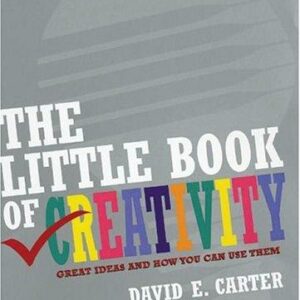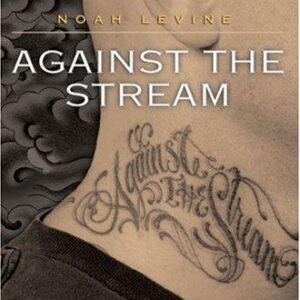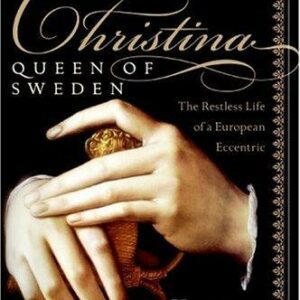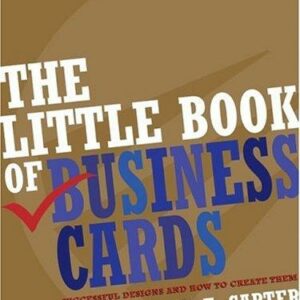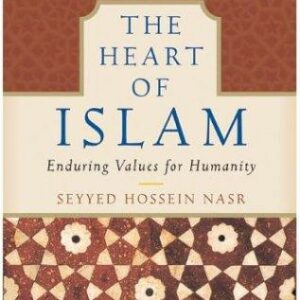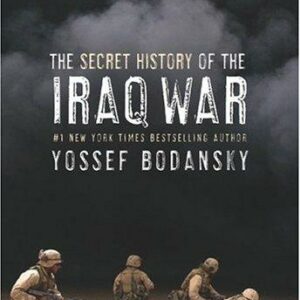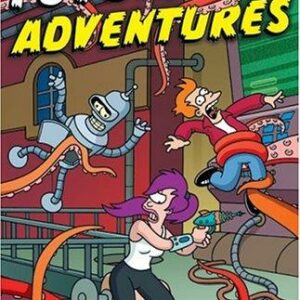Sin in the Second City
$19.00
| Title | Range | Discount |
|---|---|---|
| Trade Discount | 5 + | 25% |
- Description
- Additional information
Description
Step into the perfumed parlors of the Everleigh Club, the most famous brothel in American history–and the catalyst for a culture war that rocked the nation. Operating in Chicago’s notorious Levee district at the dawn of the last century, the Club’s proprietors, two aristocratic sisters named Minna and Ada Everleigh, welcomed moguls and actors, senators and athletes, foreign dignitaries and literary icons, into their stately double mansion, where thirty stunning Everleigh “butterflies” awaited their arrival. Courtesans named Doll, Suzy Poon Tang, and Brick Top devoured raw meat to the delight of Prince Henry of Prussia and recited poetry for Theodore Dreiser. Whereas lesser madams pocketed most of a harlot’s earnings and kept a “whipper” on staff to mete out discipline, the Everleighs made sure their girls dined on gourmet food, were examined by an honest physician, and even tutored in the literature of Balzac.
Not everyone appreciated the sisters’ attempts to elevate the industry. Rival Levee madams hatched numerous schemes to ruin the Everleighs, including an attempt to frame them for the death of department store heir Marshall Field, Jr. But the sisters’ most daunting foes were the Progressive Era reformers, who sent the entire country into a frenzy with lurid tales of “white slavery”——the allegedly rampant practice of kidnapping young girls and forcing them into brothels. This furor shaped America’s sexual culture and had repercussions all the way to the White House, including the formation of the Federal Bureau of Investigation.
With a cast of characters that includes Jack Johnson, John Barrymore, John D. Rockefeller, Jr., William Howard Taft, “Hinky Dink” Kenna, and Al Capone, Sin in the Second City is Karen Abbott’s colorful, nuanced portrait of the iconic Everleigh sisters, their world-famous Club, and the perennial clash between our nation’s hedonistic impulses and Puritanical roots. Culminating in a dramatic last stand between brothel keepers and crusading reformers, Sin in the Second City offers a vivid snapshot of America’s journey from Victorian-era propriety to twentieth-century modernity.
Visit www.sininthesecondcity.com to learn more!
“Delicious… Abbott describes the Levee’s characters in such detail that it’s easy to mistake this meticulously researched history for literary fiction.” —— New York Times Book Review
“ Described with scrupulous concern for historical accuracy…an immensely readable book.”
—— Joseph Epstein, The Wall Street Journal
“Assiduously researched… even this book’s minutiae makes for good storytelling.”
—— Janet Maslin, The New York Times
“Karen Abbott has pioneered sizzle history in this satisfyingly lurid tale. Change the hemlines, add 100 years, and the book could be filed under current affairs.” —— USA Today
“A rousingly racy yarn.” –Chicago Tribune
“A colorful history of old Chicago that reads like a novel… a compelling and eloquent story.” —— The Atlanta Journal-Constitution
“Gorgeously detailed” —— New York Daily News
“At last, a history book you can bring to the beach.” —— The Philadelphia Inquirer
“Once upon a time, Chicago had a world class bordello called The Everleigh Club. Author Karen Abbott brings the opulent place and its raunchy era alive in a book that just might become this years “The Devil In the White City.” —— Chicago Tribune Sunday Magazine (cover story)
“As Abbott’s delicious and exhaustively researched book makes vividly clear, the Everleigh Club was the Taj Mahal of bordellos.” —— Chicago Sun Times
“The book is rich with details about a fast-and-loose Chicago of the early 20th century… Sin explores this world with gusto, throwing light on a booming city and exposing its shadows.”
—— Time Out Chicago
“[Abbott’s] research enables the kind of vivid description à la fellow journalist Erik Larson’s The Devil in the White City that make what could be a dry historic account an intriguing read."
– Seattle Times
“Abbott tells her story with just the right mix of relish and restraint, providing a piquant guide to a world of sexuality” —— The Atlantic
“A rollicking tale from a more vibrant time: history to a ragtime beat.”
– Kirkus Reviews
“With gleaming prose and authoritative knowledge Abbott elucidates one of the most colorful periods in American history, and the result reads like the very best fiction. Sex, opulence, murder — What’s not to love?”
—— Sara Gruen, author of Water for Elephants
“A detailed and intimate portrait of the Ritz of brothels, the famed Everleigh Club of turn-of-the-century Chicago. Sisters Minna and Ada attracted the elites of the world to such glamorous chambers as the Room of 1,000 Mirrors, complete with a reflective floor. And isn’t Minna’s advice to her resident prostitutes worthy advice for us all: “Give, but give interestingly and with mystery.”’
—— Erik Larson, author of The Devil in the White City
“Karen Abbott has combined bodice-ripping salaciousness with top-notch scholarship to produce a work more vivid than a Hollywood movie.”
—— Melissa Fay Greene, author of There is No Me Without You
“Sin in the Second City is a masterful history lesson, a harrowing biography, and – best of all – a superfun read. The Everleigh story closely follows the turns of American history like a little sister. I can’t recommend this book loudly enough.”
—— Darin Strauss, author of Chang and Eng
“This is a story of debauchery and corruption, but it is also a story of sisterhood, and unerring devotion. Meticulously researched, and beautifully crafted, Sin in the Second City is an utterly captivating piece of history.”
—— Julian Rubinstein, author of Ballad of the Whiskey Robber
“Delicious… Abbott describes the Levee’s characters in such detail that it’s easy to mistake this meticulously researched history for literary fiction.” —— New York Times Book Review
“ Described with scrupulous concern for historical accuracy…an immensely readable book.”
—— Joseph Epstein, The Wall Street Journal
“Assiduously researched… even this book’s minutiae makes for good storytelling.”
—— Janet Maslin, The New York Times
“Karen Abbott has pioneered sizzle history in this satisfyingly lurid tale. Change the hemlines, add 100 years, and the book could be filed under current affairs.” —— USA Today
“A rousingly racy yarn.” –Chicago Tribune
“A colorful history of old Chicago that reads like a novel… a compelling and eloquent story.” —— The Atlanta Journal-Constitution
“Gorgeously detailed” —— New York Daily News
“At last, a history book you can bring to the beach.” —— The Philadelphia Inquirer
“Once upon a time, Chicago had a world class bordello called The Everleigh Club. Author Karen Abbott brings the opulent place and its raunchy era alive in a book that just might become this years “The Devil In the White City.” —— Chicago Tribune Sunday Magazine (cover story)
“As Abbott’s delicious and exhaustively researched book makes vividly clear, the Everleigh Club was the Taj Mahal of bordellos.” —— Chicago Sun Times
“The book is rich with details about a fast-and-loose Chicago of the early 20th century… Sin explores this world with gusto, throwing light on a booming city and exposing its shadows.”
—— Time Out Chicago
“[Abbott’s] research enables the kind of vivid description à la fellow journalist Erik Larson’s The Devil in the White City that make what could be a dry historic account an intriguing read."
– Seattle Times
“Abbott tells her story with just the right mix of relish and restraint, providing a piquant guide to a world of sexuality” —— The Atlantic
“A rollicking tale from a more vibrant time: history to a ragtime beat.”
– Kirkus Reviews
Abbot Kahler (formerly known as Karen Abbott) is the New York Times bestselling author of Sin in the Second City; American Rose; Liar, Temptress, Soldier, Spy; and The Ghosts of Eden Park. A native of Philadelphia, she now lives in New York City.
1. The Everleigh sisters were technically criminals, yet they genuinely believed they were helping the girls in the Club. What do you think about the Everleigh sisters’ business practices? Why were they so successful?
2. How are Minna and Ada alike, and how are they different? Who was the stronger sister, in your opinion? How were they able to perpetuate so many lies for so long?
3. In what ways does Abbott’s portrait of turn-of-the-century America mirror the present day?
4. At the time the Everleighs ruled Chicago, what other choices did women have? Do you judge the women who became “sporting girls”? Do you judge the madams? What path do you think you would have chosen if you’d been alive and facing similar circumstances during the turn of the century?
5. On the surface it seems that there are only two sides in Sin in the Second City—the reformers and the sisters—but there are actually a few more: the politicians, the Levee gangsters, and the rival madams. Are there heroes in Sin in the Second City, and are there villains? Who did you sympathize with? Did you find your loyalties shifting at any point along the way?
6. Do you think the reformers exaggerated or accurately represented the “white slavery” situation?
7. At one point, the African American boxing champion Jack Johnson shows up at the Club, and his presence causes quite a commotion. What does his visit tell you in terms of race and America at the turn of the century?
8. How did America’s sexual culture change during the Everleighs’ reign? Who was primarily responsible for these changes, the reformers or the underworld?
9. Chicago is as much a character in Sin in the Second City as the gangsters and the madams. Why do you think the Everleigh sisters chose to settle in Chicago? Would they have been as successful in another city, or was Chicago particularly conducive to their success?
10. Many reformers cited strong religious convictions as a reason for fighting the red-light districts. How do you think the religious tenor of the times compares to that of today?
11. What was your favorite Everleigh Club anecdote?
12. What satisfaction can be derived from a nonfiction book like Sin in the Second City that can’t be from novels? In what ways is the book like a novel?
13. Abbott stumbled upon the story of the Everleigh sisters while researching a long-lost relative. How much do you know about your own family’s history and ancestry? Do you know where they were and what they were doing from 1900 to 1911, when the Everleigh Club was in business?
Prologue
ANGELS OF THE LINE
1905
As soon as the bullet pierced Marshall Field Jr.—the only son and heir of Marshall Field, founder of the splendorous department store, the man who famously said, “Give the lady what she wants”—Chicago made the story even bigger than it really was. Amplifying things, good or bad, was what Chicago did best.
In the days following November 22, 1905, rumors about the shooting spun through the city’s streets. The fruit cart vendors whispered to the newsboys who shouted to the hansom drivers who murmured to the society women who were overheard by servants who gossiped with bartenders who bantered with pimps and whores and drunks. Did they hear the wound was just like the one that killed President McKinley? Tore through his abdomen, caught a corner of the liver, grazed the stomach, and skidded to a halt outside the spinal cord—lucky for Marshall Junior. He was in his bedroom at the Prairie Avenue mansion, home alone with his son and the hired help, when a hollow boom split the air. A cry followed, thin and drawn out like taffy
The family nurse and the butler scaled the stairs in flying jumps and found him slumped in a chair, wan face seeking cover in the curve of his shoulder. Goodness, the blood—it was everywhere. Veining across his shirt, fissuring down the wall. His automatic revolver came to rest on the tip of his shoe. He tried to straighten, treaded the air as if it were a lolling wave. “I shot myself,” Marshall Junior said. “Accidentally.”
But it couldn’t have been an accident. Who really believed that Field dropped his gun, and that the trigger could slam an armchair with sufficient force to explode a cartridge? A reporter at the Chicago Daily News said it was impossible—he took an identical, unloaded revolver and hurled it several times to the floor. Not once did the thing go off. Marshall Junior must have pointed the gun at himself; it was the only way. And a suicide attempt made sense. He had suffered a nervous breakdown the year prior, in 1904— this act could be a decisive sequel.
No, what really happened was sadder than suicide, more pitiful than a nervous breakdown: Field had sneaked off to the Levee district for a tryst at the Everleigh Club. So what if he was married, the father of three—he had money and status and power, and men with those things always went to the Everleigh Club. A prostitute shot him, maybe in the Gold Room or the Japanese Parlor or beneath the glass chandeliers suspended like stalactites from the ceiling. Later, as the sun deserted the sky and the streets gripped the fog, those Scarlet Sisters, Minna and Ada Everleigh, ordered his unconscious body smuggled out and planted in his home.
Those Scarlet Sisters heard all about their alleged hand in the incident, how they stood idly by while one of their harlots blasted the poor man, then directed the covert removal of his bloody body.
“We are a funeral parlor,” Ada Everleigh said, “instead of a resort.”
Her younger sister, Minna, gave a blunt, trumpet-burst laugh. Ada parsed her words as if they were in limited supply, but damned if she didn’t load each one before it left her mouth.
The Chicago rumor mill operated as predictably as the Everleighs’ regular clients; no matter how gossip began, or where it twisted and turned, it ended up, invariably, at the doorstep of 2131–2133 South Dearborn Street. Nonsense, every bit of it. The sisters had decided long ago to permit no stains, blood or otherwise, on their house.
Neither would the Everleighs add their own voices to the din. Discretion paid—but also had its price.
Even Chicago’s newspapers kept their distance from the speculation for fear that Marshall Field Sr. would pull his advertising dollars. He certainly wouldn’t appreciate reports that his son, currently lying in critical condition at Mercy Hospital, had visited a whorehouse, even one as dignified as the Everleigh Club. Still, journalists staked out the sisters all week, trying to score something—anything—that would be safe to print. Minna and Ada waited in the front parlor, expecting yet another newsman.
All thirty Everleigh Club harlots remained upstairs in their boudoirs, preparing for the night ahead, running razors under their arms, down and xx prologue: angels of the line between their legs—clients didn’t have a smooth woman at home. They packed themselves with sponges, made certain they had enough douche, checked cabinets for the little black pills that, along with three days of hot baths, usually “brought a girl around” from any unwanted condition. They yanked and tied one another’s corsets, buttoned up gowns made of slippery silk, unrolled black stockings over long legs. Hair was wound tight with pins or left to fall in tousled waves, depending on the preference of their regulars. A dab of gasoline—the newest fad in perfume, if you couldn’t afford an automobile—behind the ears, across the wrists and ankles, between the breasts. Eyes rimmed in black and lashes painted, standing stiffer than the prongs of a fork. Each courtesan had a name chosen by her peers. Once she entered this life—the life—she discarded all remnants of the one she’d left behind.
Minna navigated the silk couches, the easy chairs, and the grand piano, the statues of Greek goddesses peering through exotic palms, the bronze effigies of Cupid and Psyche, the imported rugs that swallowed footsteps. She had an odd walk, a sort of caterpillar bend and hump, pause and catch up, as the poet Edgar Lee Masters, a friend and frequent client, described it. She came to rest before a wide-paneled window and swallowed, her throat squeezing behind a brooch of diamonds thick as a clenched fist. Holding back the curtain, she surveyed Dearborn Street.
Arc lamps stretched up and out, unfurling bold ribbons of light. The air was thick and yellow, as if the varnish manufacturer on the next block had slathered his product across the sky. Visibility was reduced to the next street, or the next corner, or sometimes just the next step. No matter: Minna didn’t have to see the Levee district to know what it was up to.
Panders, an underworld term that served as both verb and noun, were outfitted in dandy ties and jaunty hats, lurking in corners and alleys. Eugene Hustion and his wife, Lottie, the “King and Queen of the Cokies,” weighed thirty pounds of cocaine and half as much morphine. Soon their salesmen would make the rounds. Funny thing was, Minna knew, Lottie was a college graduate who spoke five languages, and in her spare time composed music and painted portraits.
Down the street, at the House of All Nations, johns lined up at the $2 and $5 entrances—too bad the suckers didn’t know that the same girls worked both sides. Blind men cranked hurdy-gurdies, spinning tangled reams of melody. The air reeked of sweat and blood and swine entrails, prologue: angels of the line xxi drifting up from the Union Stock Yards just a few blocks southwest. Mickey Finn hawked his eponymous “Special” at his Dearborn Street bar. Merry Widdo Kiddo, the famous peep-show girl, warmed up her booth, breasts twirling like pinwheels behind the glass. Levee piano players— “professors,” they were called—cracked their knuckles before plucking out the hiccuped notes of ragtime.
Minna watched a figure turn the corner of 21st Street onto Dearborn and waited for the solemn gong of the bell. She patted the dark, frizzed coil of hair at the nape of her neck and reached for the door. From knuckle to wrist to elbow, waist to bodice to neck, she was ablaze in jewels. Diamonds played with the parlor light, tossing tiny rainbows against the wall.
“How is my boy?” she said, her customary greeting for every caller.
The boy this time was Frank Carson of the Chicago Inter Ocean, a once respected newspaper that had declined in recent years. Minna invited him inside with a slow-motion sweep of her arm. He was no stranger to the Everleigh Club; every reporter in the city knew its phone number, Calumet 412, by heart.
Carson saw precisely what the Everleighs wished him to see, and knew what they wished him to know. Both sisters had a prim, close-lipped smile, genuine but guarded, as if a full-on grin risked conveying complexities best left unmined. The younger one, Minna, was the talker. She spoke in clipped, staccato sentences, shooting words from her mouth—it was so good to see her boy, it had been far too long since his last visit, he should stop by more often. She broke occasionally for a frenetic drag of a goldtipped, perfumed cigarette. Ada stood next to her sister, quiet. Her eyes were darker, her hair lighter, her figure fuller. Her hands were wind-chill cold.
Frank Carson knew they ran a clean place with clean girls; their house doctor never forged the reports. He knew that Sunday was “Beau Night” at the Everleigh Club, when girls were permitted to see their sweethearts, to accept flowers and hold hands, to experience all the thrills of dating as if they lived in homes. He knew there had been a shooting at the Club two years earlier, an unfortunate incident that was no fault of the sisters’. He knew the Everleighs brought a bit of decency to a profession rife with shame.
US
Additional information
| Weight | 11.6 oz |
|---|---|
| Dimensions | 0.8800 × 5.1800 × 7.9000 in |
| Imprint | |
| Format | |
| ISBN-13 | |
| ISBN-10 | |
| Author | |
| Audience | |
| BISAC | |
| Subjects | history book, non fiction, true stories, social studies, biographies, Illinois, bios, BIO003000, gangsters, corruption, Gilded Age, religion, nonfiction books, biography autobiography, Vice, prostitution, historical non fiction, SOC059000, brothels, everleigh club, madams, white slavery, biographical, history, inspirational, women, politics, historical, crime, true crime, culture, sexuality, american history, biography, society, sex, American, true story, chicago, Social history, historical fiction, history books, cultural history, 20th century, 1900s |


